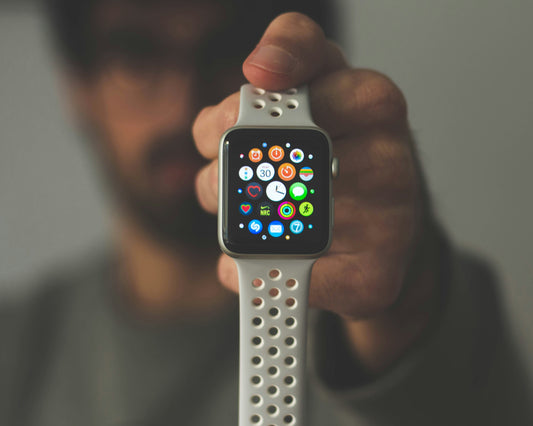In the wellness and health tech world, heart rate variability (HRV) has long been hailed as a biomarker of stress resilience and autonomic balance. But another metric is beginning to gain traction: Respiratory Rate Variability (RRV). While still emerging in mainstream awareness, RRV could be the next frontier in personalized respiratory and mental health monitoring.
This article explores what RRV is, how it works, what it may reveal about your health, and why it’s being increasingly tracked by smart devices and respiratory professionals alike.
What Is Respiratory Rate Variability?
Respiratory Rate Variability refers to the natural fluctuations in the speed and depth of your breathing over time. Just like heartbeats don’t occur at perfectly regular intervals, your breathing is not (and shouldn’t be) completely uniform.
These variations reflect how your autonomic nervous system (ANS) is responding to internal and external stimuli—including stress, sleep quality, illness, emotional state, and physical exertion.
“RRV is a real-time window into your autonomic health. It reflects the dynamic adaptability of your respiratory control system.”
— Journal of Applied Physiology, 2023
How Is RRV Measured?
RRV is typically measured using:
-
Wearables or chest bands that track breath rate and variability
-
Capnography or spirometry for clinical settings
-
Smartwatches and fitness trackers that estimate breath cycles during sleep and rest (e.g., Apple Watch, WHOOP, Garmin)
Metrics used include:
-
Standard deviation of breath intervals
-
Variability in inspiratory/expiratory duration
-
Coherence with heart rate rhythms (cardiorespiratory coupling)
Some algorithms now integrate RRV into broader wellness scores, especially for sleep and recovery.
Why Is RRV Important?
Breathing patterns are linked to stress, sleep, inflammation, and even chronic disease. RRV offers insights that go beyond average respiratory rate, which may remain stable even as underlying variability shifts.
Low RRV May Indicate:
-
Chronic stress or anxiety
-
Poor sleep architecture
-
Early signs of respiratory illness
-
Autonomic rigidity or low adaptability
High RRV Is Often Associated With:
-
Good parasympathetic tone
-
Flexibility in responding to environmental demands
- Efficient gas exchange and ventilatory control
Clinical and Performance Applications
Stress Monitoring
Decreased RRV has been observed in individuals with high cortisol levels and chronic anxiety. Breathing becomes rigid and shallow under stress, and reduced RRV may be an early warning sign.
Athlete Recovery & Overtraining
Just like HRV, RRV can help athletes optimize training loads. A sudden dip in RRV could signal insufficient recovery or respiratory strain.
Sleep Quality Analysis
Devices now analyze RRV during different sleep stages. Flattened variability during REM may correlate with poor restorative sleep or obstructive breathing patterns.
Respiratory Disease Progression
RRV is being studied in conditions like COPD, asthma, and long COVID. Lowered variability may correlate with reduced lung elasticity or impaired ventilatory control.
How to Improve Your Respiratory Variability
RRV is not fixed—it can be influenced by lifestyle and breathing habits:
-
Slow, deep breathing (e.g., 4-6 breaths per minute) improves vagal tone
-
Box breathing or coherent breathing enhances RRV over time
-
Nasal breathing increases nitric oxide and promotes smoother variability
-
Sleep hygiene and circadian regulation support natural respiratory rhythms
A study in NeuroImage (2022) showed that just 5 minutes of paced breathing practice daily increased RRV and was associated with improved emotional regulation in adults.
Future of RRV: Biomarker or Buzzword?
While more validation is needed, the integration of RRV into wearables and biofeedback platforms suggests that it’s here to stay. As with HRV, it’s not about hitting a specific number—but rather about noticing patterns, trends, and changes in relation to your health and habits.
RRV could soon become a core pillar of precision breath training, stress detection, and early illness monitoring.
Final Thoughts
Breath is more than just in and out—it’s a rhythm, a pulse, and a signal. Respiratory Rate Variability brings a nuanced understanding to that rhythm, offering insights into your physical and emotional state.
As technology continues to catch up with physiology, tracking RRV may become as routine as checking your heart rate—empowering you to tune into the body’s subtle but meaningful fluctuations.
Resources
-
“Respiratory Variability: Emerging Marker in Mental Health” – Frontiers in Psychology
-
“Paced Breathing and RRV in Emotional Regulation” – NeuroImage, 2022
-
WHOOP Blog: www.whoop.com
- Apple Health & Respiratory Trends: support.apple.com




